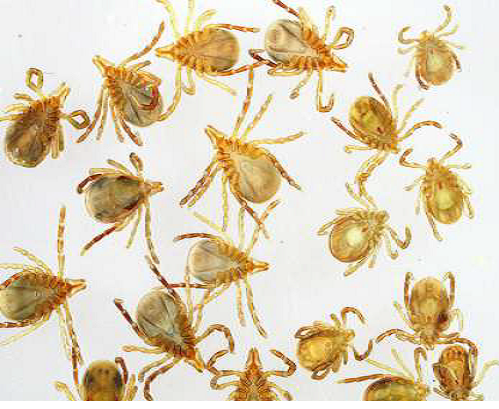Ticks can be bad in warm humid periods. Apart from the annoyance of itchy bites, some people are allergic to ticks, so it’s worth knowing more about them, and particularly about removing them!
Note that although the method below has been found to be effective, readers need to satisfy themselves as to the effectiveness and side effects of the method. MCCG does not claim to have any particular expertise in this field.
The following advice was published in the MCCG Summer Newsletter 2011, and matches that provided here by the Australian Society of Clinical Immunology and Allergy:
There are various ways to manage ticks, once attached, but a few years ago we adopted a method suggested by a doctor at Royal Brisbane Hospital and found it very easy and successful. You simply give the tick a couple of squirts with Aerostart and the tick dies within a few seconds. Very convenient! The earlier you squirt, the better, preferably without touching or poking it first because it will inject less of the foreign protein which causes a reaction. If it’s a small one (an early stage;some people don’t realise they are baby ticks), you don’t need to remove it. Larger ones can be removed with fine forceps once dead (no leg waving after a gentle poke), grasping where the ‘beak’ enters the skin. There’s no urgency to do that.
Aerostart is sold for starting recalcitrant two-stroke motors and can be purchased at SupaCheap Auto and such places. WARNING: Aerostart is petroleum ether. It is flammable and an anaesthetic. USE IN A VENTILATED PLACE & AWAY FROM FLAME. It works very quickly because the ether dissolves the tick’s waxy cuticle and permeates the tick.
It’s only the female tick that sucks your blood. The males have a smaller rostrum (‘beak’) and you may find them crawling over you looking for a female with which to mate, or to feed on it. The life cycle varies a bit between years but, in general, tiny larvae (pinhead size, with 6 legs) hatch from eggs in late summer/ autumn. After their first feed they moult to a nymph (8 legs) and moult again after a second feed to become an adult. Fully fed females fall off a host in summer as a sac full of hundreds of eggs. If you are unlucky enough to sit where these eggs have hatched, e.g. in long grass, you may collect many dozens of tiny dark tick larvae, all having their first feed.
Aerostart is then magic; spray the affected area and kill the lot.
To avoid getting a tick in the first place, ‘Rid’ seems to be the best repellent.
The Queensland Museum has a downloadable Fact Sheet which can be found on the resources page of their web site (but it advises killing ticks with an insecticide, which is very slow!).

The photo shows a collection of ticks. Most are on their backs. The males are on the right, and their smaller ‘beaks’ can be seen.
Other sources of official advice tend to stick to the use of tweezers or insecticides. See for instance:

